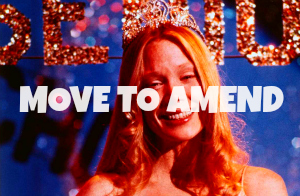After two weeks off to focus on the consumption of turkey, mashed potatoes and jello salad, we’re back in the AM 1700 studio this Saturday evening at 6:00 to talk about everything from the recent demands made by representatives of EMU’s black student body, to the climate talks currently taking place in Paris. If you’re up for it, we’d love to have you join us… Here’s a high level, minute-by-minute breakdown of what you can expect if you tune in.
BLACK STUDENT DEMANDS AT EMU: As of today, according to the site The Demands, black students on 67 U.S. college campuses have made formal demands of their university administrators. While some of these demands have focused on the removal of specific officials, like we just saw at the University of Missouri, and the renaming of certain university buildings, like at Yale, most, according to a recent analysis done by FiveThirtyEight.com, are more broad and structural in nature. “The most common demands, according to our analysis,” says FiveThirtyEight’s Leah Libresco, “have been for schools to increase the diversity of professors, offer sensitivity training to students and faculty members, and create or expand support for cultural centers on campus.” And, during our first segment, we’ll be talking with Eastern Michigan University students Darius Simpson and Daryl Holman about “The Black Student 10-Point Plan” that has been proposed for Eastern. Among other things, we’ll talk about how the plan was drafted, what the response from EMU administration has been thus far, and what their next steps will be if the university does not comply. [As FiveThirtyEight points out, at more than a quarter of the schools where such demands have been made, they’ve been accompanied by “a deadline by which school administrators needed to agree or respond, or else face escalations of protests.”] And, of course, we’ll be going through the plan point by point.
YPSI’S REAL ROSIE THE RIVETERS: At 6:30, we’ll be joined by local historian Matt Siegfried for a new installment of everyone’s favorite local AM radio history feature, “The People’s History of Ypsilanti with Matt Siegfried.” In this edition, we’ll be looking behind the myth of the Willow Run bomber plant, and the “Rosie the Riveters” who worked there during World War II, and discussing what life was really like at the plant. “The workers lived in shacks without water,” said Siegfried recently, “while the tax payers built Henry Ford a factory, a railroad and a highway. Henry Ford then walked away from the plant after black UAW members, who were responsible for the militant campaign to force Ford to hire black workers, were elected to Ypsilanti City Council in 1945.” So, if you want to hear the truth about the so-called “Arsenal of Democracy,” how many of the real “Rosies” fought integration, and how local Fourth of July celebrations throughout the war were cancelled for fear of race riots, be sure to tune in.
DRAWING THE CLIMATE CHANGE BATTLE LINES, FROM PARIS TO MICHIGAN: At 6:45, we’ll be joined in the studio by 350.org’s Ethan Wampler and University of Michigan undergrad Jim Stehlin, organizers of the December 12 Michigan Climate March. During our discussion about the local response to global climate change, we’ll also be joined on the phone by U-M professor Dr. Ricky Rood, who will be talking with us, among other things, about current research into how we address the problems of climate change. And, if everything goes according to plan, we’ll also have a prerecorded conversation with Dr. Paul Edwards, the author of A Vast Machine: Computer Models, Climate Data, and the Politics of Global Warming, who is presently on the ground in Paris with U-M’s student delegation.
UNVEILING THE NEW MONKEY POWER TRIO: And, at about 7:30, because I just got the new Monkey Power Trio record in the mail, and haven’t yet been able to listen to it, as I don’t have a working record player, I thought that I’d play a few songs in the studio and discuss them with local musicologist Jim Cherewick, who assures me that he will give a “painfully honest” critique. And, if time allows, we may even call up a few members of the band and ask them what the hell they were thinking.
And, here, thanks to AM 1700 senior graphic designer Kate de Fuccio, is this week’s poster, in case any of you want to print copies and distribute them in the Meijer’s parking lot.
FOR THOSE OF YOU WHO HAVE NEVER TUNED IN TO THE SIX PACK BEFORE, HERE ARE THE DETAILS ON HOW TO LISTEN:
Unless you live inside the AM 1700 studio, chances are you won’t be able to pick the show up on your radio. As that’s the case, I’d recommend streaming the show online, which you can do either on the AM1700 website or by way of TuneIn.com.
And for those of you who aren’t yet familiar with the show, and need to get caught up, you can listen to the entire archive on iTunes. If you start right now, and listen to everything at double speed, you can do it.
One last thing… If you’d like to tell your friends and neighbors about the program, feel free to share the Facebook event listing.
And do call us if you have a chance. We love phone calls. So please scratch this number into the cinder block wall of the recreation room of whichever facility you’ve been assigned to… 734.217.8624… and call us between 6:00 and 8:00 this Saturday evening. The show is nothing without you. Sure, sometimes it’s nothing even with you, that’s true, but usually you make it better.














25 Comments
The Black Student 10-Point Plan
I would like to hear people’s thoughts on the role that agriculture plays in carbon production and carbon sequesterization. Thanks Mark.
Wasn’t there a new study saying that meat production was responsible for more carbon that auto? I may be wrong about that. I didn’t read the story. But I recall having seen a headline.
Industrial scale meat production. Please make that distinction. Animals for meat and milk are an important component of sustainable farming and sustenance farming. There are no silver bullet answers to a systemic problem.
Yes. As I said, I didn’t read the article, but I believe much of this has to do with the clearcutting of rainforests to accommodate industrial meat production.
Yes! Nate, that’s something I have been thinking about a lot as well. Ranching done poorly is hugely carbon-intensive. Ranching done well can actually be carbon-negative since building topsoil acts as a carbon sink. I imagine there are a lot of other smaller scale things we could be doing to build topsoil and sequester carbon.
I’m also interested in hearing their thoughts on communicating about climate change. I think a lot of people hear about all the things that they are doing wrong or the things that the environmentalists want to take away. “energy efficiency means freezing in the dark” kind of thing. I’m interested in whether there’s any conversation at the conference about the areas of climate change action that are about doing MORE instead of less (nate’s comments about carbon sequestration via agriculture are one example of this), or conversations about messaging and communication in general.
I would steer the conversation away from personal behaviors (thats, frankly, easy, and has little impact overall) and talk about policy. I sense the policy conversation is moving away from just talking carbon restrictions and towards investment in carbon reducing technologies. That makes a lot of sense. That stuff is exciting and will be the next tech boom. My two bit theory is that technological change is the fastest way to change human behavior. As a luddite, it is not my natural inclination.
Maybe ask them what technological innovations give them hope. Maybe ask them what countries we can look to as models. Just ask them what gives them hope.
I’m not a natural positivist either, but when facing imminent global threat, it turns out that fear mongering does not motivate most people.
Gillian is on it. If (big if) we do what is necessary to adjust our consumption and patterned behavior individually and culturally and governmentally, climate action could actually fix so many other problems in modern society. The vision of climate action that I subscribe to is extraordinarily positive for most human beings. A lot of things get fixed and a lot of super creative solutions happen when we start living within the limits of of our global resources. There is a social component– among our global resources are people of the world. It’s heartening to be able to say these things again. I really believe them. The world just has not been ready. Oslo really broke my heart. But this feels different. Maybe the attacks in Paris had some residual effect. There is a honeymoon period after tragic events when people are better to one another and braver. (this is documented: Rebecca Solnit wrote a great book on it) Maybe the ashes of tragedy will steel the resolve of some of those in attendance. My gut is that I like the turn of conversation in Paris. It feels different, but maybe we will end heartbroken again. I would ask the students about the Paris attacks maybe, and if they feel it has an impact on the zeitgeist at the conference.
Word on the street is that EMU Interim President Kim Shatzel has stated her support for the 10 Point Plan.
How much weight does Shatzel’s recommendation hold given that she is leaving?
People will usually follow the path of least resistance or at least there is an inclination towards it. That is why policy changes vs individual choices is the way to go, imho.
What is your comment in reference to, Lynne?
I am wondering how demand number 1 would work out mathematically. 7 percent of conferred phd’s are given to black persons in U.S.. 75 percent of black phd’s holders have phd’s in education, medicine and law. The number of professors that are teaching at historically black colleges is extremely high. What percent of EMU professors are black?
Usually departments are trying to fill specialty- knowledge gaps or build upon strengths of the department, right? With the idea of giving a comprehensive education….I wonder how many Black students looking for a research school would prioritize race over specialty-within a field?
Kit– Mark posted on FB asking for questions re the climate summit for U-M students there. He moved a bunch of responses over here. Lynn seems to be responding to those.
Thank you, Jean. I thought she might have said it in reference to Kim Shatzel’s support for The 10 Point Plan.
Another way to look at demand number 1 is to try to investigate the percentage of *graduating* students by race and then to compare the percentage of faculty by race.
By that standard: Hispanic students are grossly underrepresented in the faculty at EMU.Asian students are grossly over represented by the faculty. White and Black students are represented close to perfectly.
Not sure it is the right way to look at the issue but honestly the list of demands are so vague and lacking in reasons that a conversation needs to get rolling. thanks Mark, for having this issue as part of your show. I will tune in.
It’s our pleasure to announce that Frost Flakes/City Watch is Gary Alan Clark. **Golf Clap**
Q: How have the cultural environment, the governance, and the organized biases at EMU changed over time?
OPN: (It hasn’t) Eastern Michigan University is operating as an early 20th-century, imperialistic institution. Since it’s founding in 1849 (as Normal College), Eastern Michigan University’s historical leadership (and student population) has been comprised mostly of immigrant-born white men and women (including 24 white men Presidents, two white women Presidents, countless Graduate Assistants and Department Heads).
The Black Student 10-Point Plan (a living document), if adopted as a framework to improve the Black student experience will ultimately enhance the day-to-day general well-being for ALL students (especially nonwhite, non-heterosexual, non-normative students).
MarkMaynard.com blog users enjoy amplifying their ‘point of view’, especially if it concerns eradicating white supremacy and privilege, structural racism, and state violence, however, the shared povs also prove that the Black Student 10-Point Plan, and addressing the lack of Black (and minority) leadership in higher-education is important.
Frosted Flakes does not know who or what “City Watch” is and Frosted Flakes does not know who Gary Alan Clark. What the hell are you talking about k:yb?
Even if you thought I was “City Watch”, which I assume is an alias on some other blog then why in the hell would you want to identify me? Serious question: What the hell are you talking about?
The More You Know
Great show. Had to leave midway through climate comvo, but what I heard up to that point was great. Really great. Who knew college kids were so mart and Rosie the Riveter so bad? It is a great pleasure to tune off NPR just as Garrison Keillor comes on the air and plug into your show.
Thanks, Jean. I’m glad to know that people are out there listening.
Had a bunch of people over last night. All were fascinated by the Rosie the Riveter history. It solved many mysteries about the poor quality of housing east of Willow Run, the influx of people from Kentucky, etc. I wonder if he’d be willing to write that up. It’s a local story that may interest a much wider audience.
The Willow Run history segment is pretty seriously flawed.
The government built Willow Run village to house the workers after it became clear that the local housing stock could not support the number of workers. It was not fancy, but not horrible by the standards of the time either. They also built a cafeteria (with food subsidy), a movie theater, and provided bus service.
Segregation during WWII is no secret, and hardly shocking considering the attitudes of the time.
I recommend “The Story of Willow Run Village” for serious students of the subject.
The plant was not given to Ford. They never owned it. It was in fact sold by the government after the war. It was also financed by U.S. Savings bonds, in part. Americans sacrificed to loan that money to the government. Sacrifice to a pussy like Siegrid is skipping the morning Starbucks, so take your revisionist “history” and shove it up your ass.
Your “serious” history book was written in 1956….for willow run junior high school students under contract from the school board; it is simply a celebration. There is no bibliography and 61 of its 138 pages are pictures. The fact that you think it’s serious tells me how serious you are. And your use of the word “pussy” tells me you might have read this book yourself in junior high…in 1956.